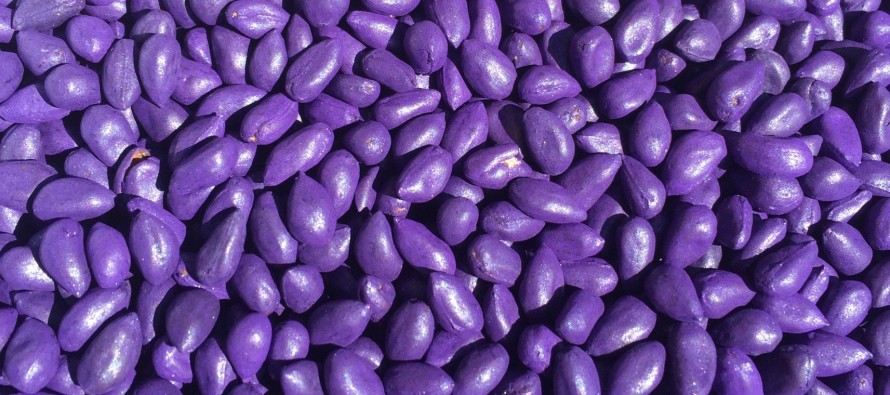2020 Recommendations for Controlling Thrips in Cotton

Related Articles
- Fertilizing Cotton with Poultry Litter 5
- Mississippi Cotton Insect Situation of 2010: A Look Back 3
- Bayer CropScience-O.A. Cleveland Weekly Cotton Commentary 0
Latest Tweets
Not much has changed since last year in regards to thrips control via insecticide seed treatment. Thrips are considered the number one pest of seedling cotton. Tobacco thrips are the species that are encountered more than 90% of the time in Mississippi. The probability of having a thrips infestation in cotton is 100%. Therefore, preventative use of seed treatments is a standard practice and is very appropriate. Data from more than 35 trials in Mississippi shows a 115 lbs. lint yield advantage when thrips are controlled with a seed treatment.
Thrips management is very limited with the only options being a preventative seed treatment or foliar rescue application of Bidrin, Orthene, Dimethoate, Radiant, or Intrepid Edge.
There are really only two seed treatment options in cotton: neonics and acephate. Commonly used neonics include thiamethoxam (Cruiser, Avicta, etc.) or imidacloprid (Gaucho, Aeris, etc.) either alone or in combination with a nematicide. In 2011, we began observing reduced tobacco thrips control with the active ingredient thiamethoxam. Since that time, resistance in tobacco thrips to thiamethoxam has been confirmed through laboratory bioassays. As a result, we have switched over almost exclusively to imidacloprid based products. Many have wondered how long this product will hold up given that it is in the same class of chemistry as thiamethoxam. In 2015, we began to see a decline in efficacy with imidacloprid in select trials. However, this phenomenon is not extremely widespread and to date this has still not fully materialized. It is important to remember that with both thiamethoxam and imidacloprid seed treatments, this only applies to tobacco thrips making it a cotton problem that does not transfer over to corn or soybean. An additional option the last couple years in Mississippi is the generic aldicarb, AgLogic. We have tested this product extensively the last couple years and it looks very good. This option is being utilized again this year.
What to do in 2020:
We no longer recommend thiamethoxam in Mississippi on cotton (still an option on other crops). Aeris treated seed is still provides good control and is available by Bayer CropScience as a down stream treatment at your local dealer. Although Aeris contains imidacloprid, the thiodicarb component (used for nematodes) also has thrips activity and it has performed well even where imidacloprid alone has not. If Aeris is not an option, I would strongly consider having your dealer over-treat your imidacloprid treated seed with acephate (6.4 oz/cwt). We have been looking at this option for a number of years and it has looked good. Acephate alone controls thrips but the residual is much shorter and the likelihood of follow up foliar applications is high. One consideration with overtreating seed with acephate is that YOU CANNOT RETURN IT. Additionally, if you are set up to spray in-furrow, acephate at 0.75-1 lb/acre is a very good option in addition to an imidacloprid seed treatment but not in place of. Finally, you have foliar rescue treatments as an option. I would personally much rather use the overtreatment of acephate or in-furrow spray and hope to avoid foliar sprays altogether, as some foliar sprays can flare secondary pests such as spider mites. Incidence of these secondary pests often requires further sprays which can be expensive. The best foliar insecticide application timing for thrips control is the 1-2 leaf cotton stage for maximum economic returns; however, this does not line up very well with residual herbicide applications so insecticide applications are often considered an “extra trip”. You also may see big differences in varietal responses to thrips feeding. We confirmed a few years ago that certain varieties seem to exhibit some host plant resistance to thrips.
In 2017, many growers experimented with the additional overtreatment of acephate or in-furrow sprays on top of imidacloprid treated seed and reported excellent results across the state. Most reported no need for additional foliar sprays when this option was chosen. Since then then use has increased substantially. It is very important to remember that there will always be adult thrips on cotton. This does not necessarily mean that a foliar insecticide is warranted. If cotton is growing well, and only adults are present, the majority of the time there is no need for additional treatment. Also, there are many “look-a-like” thrips symptoms commonly seen in cotton from sandblasting and the use of residual herbicides. The presence of immatures is the key. When immatures are showing up, this means that seed treatments are beginning to break down and reproduction is taking place. Also, rarely is it ever economical to treat thrips past the fourth leaf stage.
An important thing to remember is that the first few weeks after plant emergence are critical to set the crop up for the rest of the year. Poor seedling growth will almost always delay maturity and make plant bug management much more difficult. Let’s get the 2020 cotton season off to a good start with good thrips control.




If have seen much better control with “Avicta Elite Cotton Plus with Vibrance CST” versus option of Aeris with Imidacloprid on cotton seed treatments. I didn’t see any comments about this particular offer Avicta Elite Cotton Plus with Vibrance CST in your post.
*Avicta Elite Cotton Plus with Vibrance CST actually contains both 2 type of neonic insecticides (Cruiser-Thiamethoxam + Gaucho-Imidacloprid), plus nematicide Avicta (Abamectin) and 4 different types of fungicides within Vibrance CST.
There is also some previous data that shows Avicta is actually better than Aeris for nematodes control.
*Please note below link Avicta vs. Aeris.-
http://www.syngenta-us.com/prodrender/imagehandler.ashx?ImID=60A87F39-366F-4024-BA4E-8B81474C120F&fTy=0&et=8